Trilobite
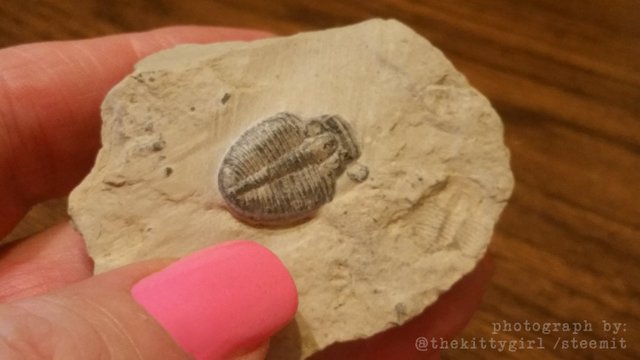
• TRILOBITE FOSSIL FROM MY COLLECTION, PHOTO BY ME •
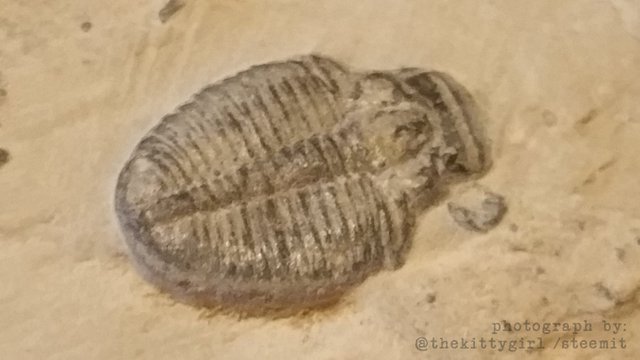
• PHOTO BY ME •
This fossil that I have is actually the exoskeleton of a trilobite. The soft tissues of the animal decayed before the exoskeleton became trapped in the rock. Please see one of my recent posts for an explanation of what an exoskeleton is. Isn't it wonderful how little tidbits in one post can help provide a clear picture of something in another post...?!?!? 😁
The trilobites were a group of many genera and species within the arthropod phylum. Although they somewhat resemble Wood Lice (a.k.a.: pillbugs, or rolypoly bugs), the two are only distantly related. Trilobites were marine creatures, living in the oceans and seas of the ancient world, and more related to modern crustaceans than anything else. The image at right is an artist's conception of how one species of trilobite (Triarthrus eatoni) might have looked, based on scientific evidence.
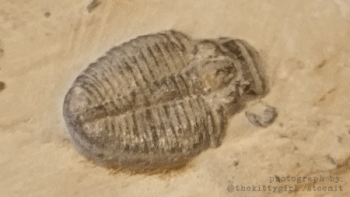
Based on fossil evidence, the trilobites lived during the Paleozoic Era, especially during the Cambrian through Permian periods of that Era. If it had not been for the Permian Mass Extinction event (q.v.), we might still have these little critters swimming in our oceans today.

• PHOTOS BY ME •
Trilobites appear to have first appeared in what is now Siberia, and spread to other parts of the globe as they diversified into further species. They are generally found worldwide, but with high concentrations in North America, the British Isles, Western Europe, and Morocco. These fossil records support the idea of paleocontinents in the developmental history of the Earth.
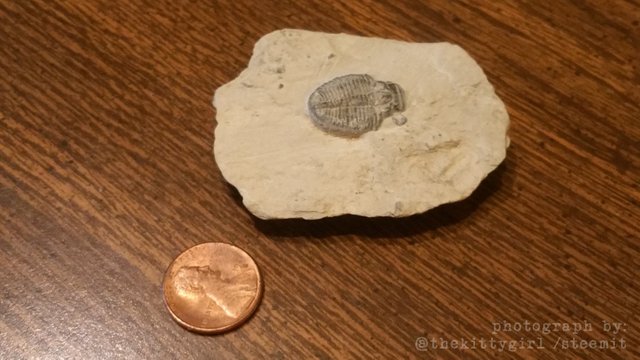
• PHOTO BY ME •
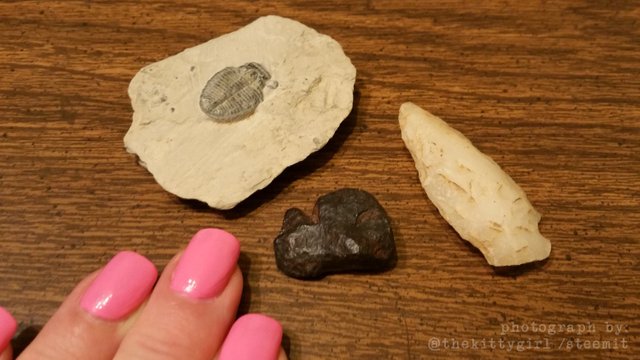
• PHOTO BY ME •
 😊
😊SOURCES
1 Wikipedia: Fossil
2 Wikipedia: Paleozoic Era
3 Wikipedia: Permian–Triassic extinction event
3 Wikipedia: Trilobite
4 Wikipedia: Wood Louse

The Imperial Moth • Fall Webworms • The Origin of "Dog Days"
Full Moon & Mars in Conjunction • Exoskeleton
Fun Under the Night Sky • Venus, Evening Star • Fire Hydrants
Round Bottom Bottles • Micrometers and Precision Measuring
Climbing a Mountain with Trigonometry • I Wish You Cheer
Dynamics of Autumn • How Rocks Get Their Color

Garden Quartz, freeform • Granite Quarry № 2 • Apophyllite
Rocks from Space! • Quartz Rock: Raw versus Polished
Chrysocolla • Tourmaline • Bornite • Goethite • Small Quartz Crystal
Smoky Quartz • Tibetan Quartz • Amazonite Beads • Zoisite
Rutilated Quartz • Garnet • Amazonite Sphere • Lapis Lazuli Mala
Amethyst Point • How Rocks Get Their Color • Red Jasper
Ring, Ring! Amethyst Calling! • Lapis Lazuli • Turitella Agate

a big hug is due to @enginewitty for designing the following personal banner for me 🤗



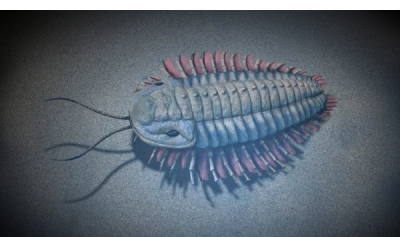
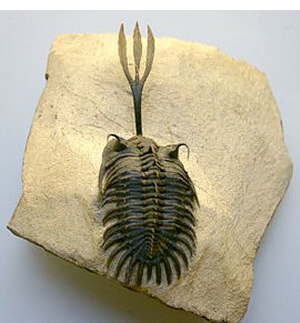


Hi there!!
You have an awesome collection going on.
Keep it up!!
kool
this is a rare finding, very unusual, almost resembling head lice ....
That’s very cool.
Me fascinó tu artículo, muy pero muy interesante; y esas fotos... ¡Geniales!. Gracias por compartir toda esa información, a mi también me gustan esos temas de coleccionar meteoritos o piezas que tienen alguna historia como lo que tu presentaste aquí... Un gran saludo... #thealliance
Supercool! You can find worm holes/ coral around here by the rivers.
This post was shared in the Curation Collective Discord community for curators, and upvoted and resteemed by the @c-squared community account after manual review.
Cool photos :)
What an excellent specimen!! I really enjoyed this piece..thanks @thekittygirl.
This post has been voted on by the steemstem curation team and voting trail.
There is more to SteemSTEM than just writing posts, check here for some more tips on being a community member. You can also join our discord here to get to know the rest of the community!